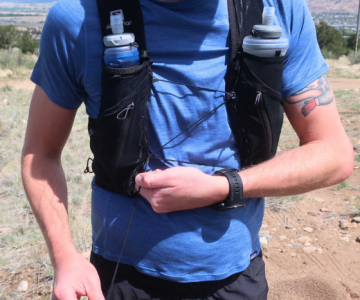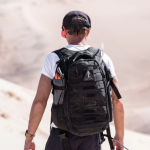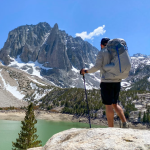Trekking at high altitudes offers breathtaking views and unforgettable experiences, but it also comes with unique challenges that can jeopardize your health if not prepared for properly. As you ascend above 8000 feet (2500 meters), the air becomes thinner, which can lead to altitude sickness if not managed carefully. Here’s how you can prepare for a high-altitude trek and reduce the risk of altitude sickness.
Understanding Altitude Sickness
Altitude sickness, also known as acute mountain sickness (AMS), is the result of reduced oxygen levels at higher elevations. There are three primary stages of altitude sickness: acute mountain sickness, high-altitude pulmonary edema (HAPE), and high-altitude cerebral edema (HACE). While AMS is the mildest form, it can progress into the more severe conditions of HAPE or HACE, both of which can be life-threatening.
Acute Mountain Sickness (AMS)
This is the most common form of altitude sickness, and it’s typically characterized by symptoms such as headaches, dizziness, nausea, and breathlessness. If left untreated, AMS can worsen, leading to more severe symptoms like loss of coordination or confusion. If you experience these signs, it’s crucial to stop your ascent and either stay at your current altitude or descend to a lower one.
High-Altitude Pulmonary Edema (HAPE)
HAPE occurs when fluid builds up in the lungs, impairing oxygen exchange and leading to difficulty breathing. Symptoms of HAPE include a persistent cough, shortness of breath even at rest, and chest tightness. Immediate descent is essential for recovery.
High-Altitude Cerebral Edema (HACE)
HACE is the most severe form of altitude sickness and involves the swelling of the brain. Symptoms include severe headaches, confusion, irritability, and lack of coordination. Anyone showing signs of HACE needs to descend immediately—preferably by at least 1000 meters.
Who Is at Risk?
Altitude sickness can affect anyone, regardless of age, gender, or physical fitness. However, previous experience with AMS, living at sea level, or having underlying medical conditions can increase your risk. It’s important to remember that you may still experience altitude sickness, even if you’ve trekked before without issues.
Preparing for Your Trek
Consult Your Doctor
Before embarking on a high-altitude trek, it’s important to consult with your healthcare provider. Ensure that you don’t have any pre-existing conditions that might increase your risk, and discuss the use of medications like Diamox (acetazolamide) or dexamethasone, which can help prevent altitude sickness.
Dexamethasone vs Diamox
Dexamethasone is a medication used to treat brain swelling (HACE) but is controversial because it can mask symptoms and reduce immune function if used long-term. Diamox is a safer and more effective option for preventing AMS. Always consult with your doctor before using any medications in the mountains.
Travel Insurance
Ensure that your insurance covers high-altitude trekking, as regular travel insurance may not. This coverage is essential, especially in case of emergencies or evacuations. Trekking insurance may be more expensive, but it could save you a lot in the long run.
Months Before Your Trek
Acclimatization
If you have access to a higher elevation near your home, use it to prepare. Hiking regularly at altitudes of 1500-2000 meters (5000-6500 feet) can help your body adapt. Gradually increase the intensity and elevation of your hikes to build endurance and improve your body’s ability to process oxygen at higher altitudes.
Physical Fitness
Building cardiovascular fitness is essential for high-altitude treks. If you’re not already in shape, start training at least two months before your trip. Interval training is particularly effective for improving your VO2 max (maximum oxygen uptake), which helps your muscles use oxygen more efficiently during physical exertion.
Breathing Exercises
At altitude, you may find yourself breathless after even mild exertion. To prepare, practice deep breathing exercises. Focus on slow, controlled breaths to help you manage shortness of breath when hiking at high elevations.
A Few Days Before Your Trek
Final Acclimatization
If your destination has towns or areas above 10,000 feet, consider spending a few days at that altitude before starting your trek. Locations like La Paz or Namche Bazaar make excellent acclimatization stops. Engage in light day hikes during this period to aid your body’s adjustment to the higher elevations.
Hydration
At higher altitudes, you’ll need to drink significantly more water. The air is dry, and you’ll lose moisture through respiration faster than at sea level. Make sure to hydrate consistently, even if you don’t feel thirsty. Aim for 3-4 liters of water a day.
During Your Trek
Pacing Yourself
It’s vital to take your time and move at a slower pace than usual, especially at higher altitudes. Aim for a relaxed pace that allows for deep, steady breathing. Regular breaks are essential, and you should always listen to your body.
Sleeping Low
To help your body recover, it’s recommended to sleep at a lower altitude than where you hike during the day. If possible, hike higher in the afternoon and return to camp for the night. This strategy can help reduce the chances of altitude sickness.
Acclimatization Stops
Make sure to take rest days during your trek. It’s advised to sleep no more than 300 meters higher than the previous night once you reach elevations above 3500 meters. A day of acclimatization helps your body adapt to the thinner air and reduces the risk of AMS.
Stay Hydrated and Fueled
In addition to drinking plenty of water, keep your energy levels up with high-calorie, easy-to-digest foods. Eating carbohydrates regularly will help maintain your glycogen stores. Avoid alcohol and recreational drugs, as they can impair breathing and dehydration.
Conclusion
Proper preparation is key to having a safe and enjoyable high-altitude trek. By building fitness, acclimatizing, staying hydrated, and pacing yourself, you can minimize the risks associated with altitude sickness. While trekking at high elevations can be challenging, with the right preparation, you’ll be able to enjoy the stunning vistas and sense of accomplishment that come with exploring some of the world’s most breathtaking landscapes.





